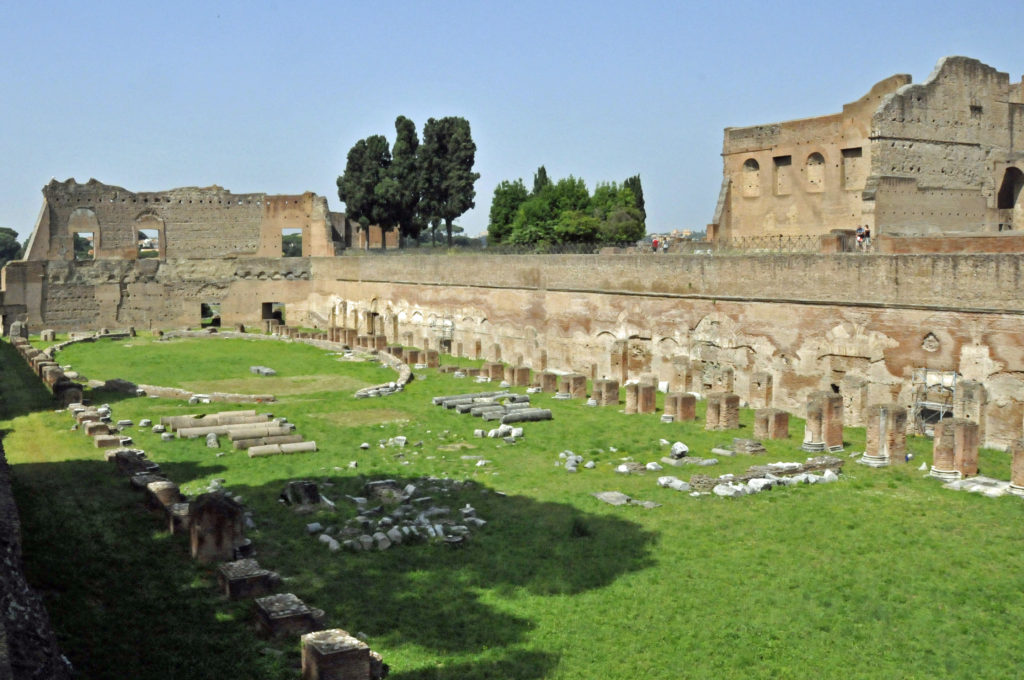
Palatine Hill, the centermost of Rome’s famous seven hills, contains the ruins of ancient structures whose similar names often confuse modern visitors.
During Rome’s Republican era, Palatine Hill was the home of Rome’s most prosperous citizens. In 27 B.C., after Octavian had defeated forces loyal to Mark Anthony and Cleopatra, the Roman Senate proclaimed him Emperor, with the title “Augustus.” He built his official residence on Palatine Hill. The ruins of that relatively modest home are today open to the public and called “Domus Augustini” (House of Augustus). Later Emperors, also given the title “Augustus,” followed Octavian’s lead and built their palaces on Palatine Hill, effectively making it the heart of the Roman Empire. Domitian, who became Roman Emperor in 81 A.D., built a magnificent palace on Palatine Hill overlooking the Circus Maximus and the Roman Forum. Also used by Domitian’s successors, this palace, the vast ruins of which are also open to the public, became known as “Domus Augustana” (House of the Emperor).
During his 15-year reign, Domitian built two fields that also often bear confusing names. In Campus Martius (Field of Mars), Domitian erected a 250-meter-long stadium that seated between 20 and 30 thousand spectators. Dedicated in 86 A.D., this elongated facility was used for athletic competitions and called “Circus Argonalis” (Competition Arena). Today, the interior of what is often called “Stadio di Domiziano” (Stadium of Domitian) lies entirely beneath Piazza Navona, the largest public square in Rome. Just to the east of his palace, Domitian built a 146-meter-long field, surrounded by a two-story colonnaded portico. The exact purpose of what is often also referred to as “Stadio di Domiziano” remains unclear. It may have been used primarily as Domitian’s private garden. To prevent confusion with Circus Argonalis, this field is sometimes called simply “Stadium on Palatine Hill.”
Comments are closed.